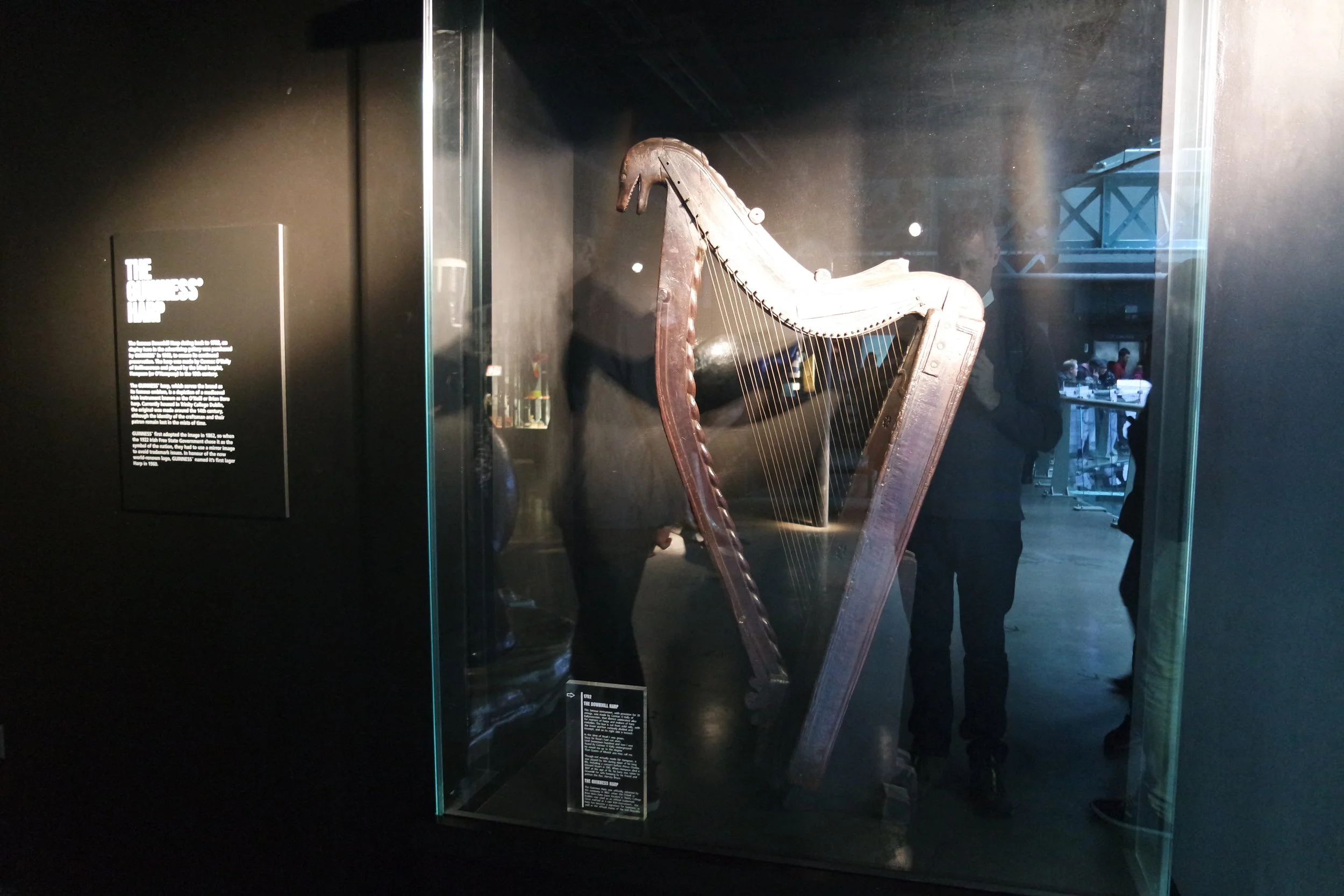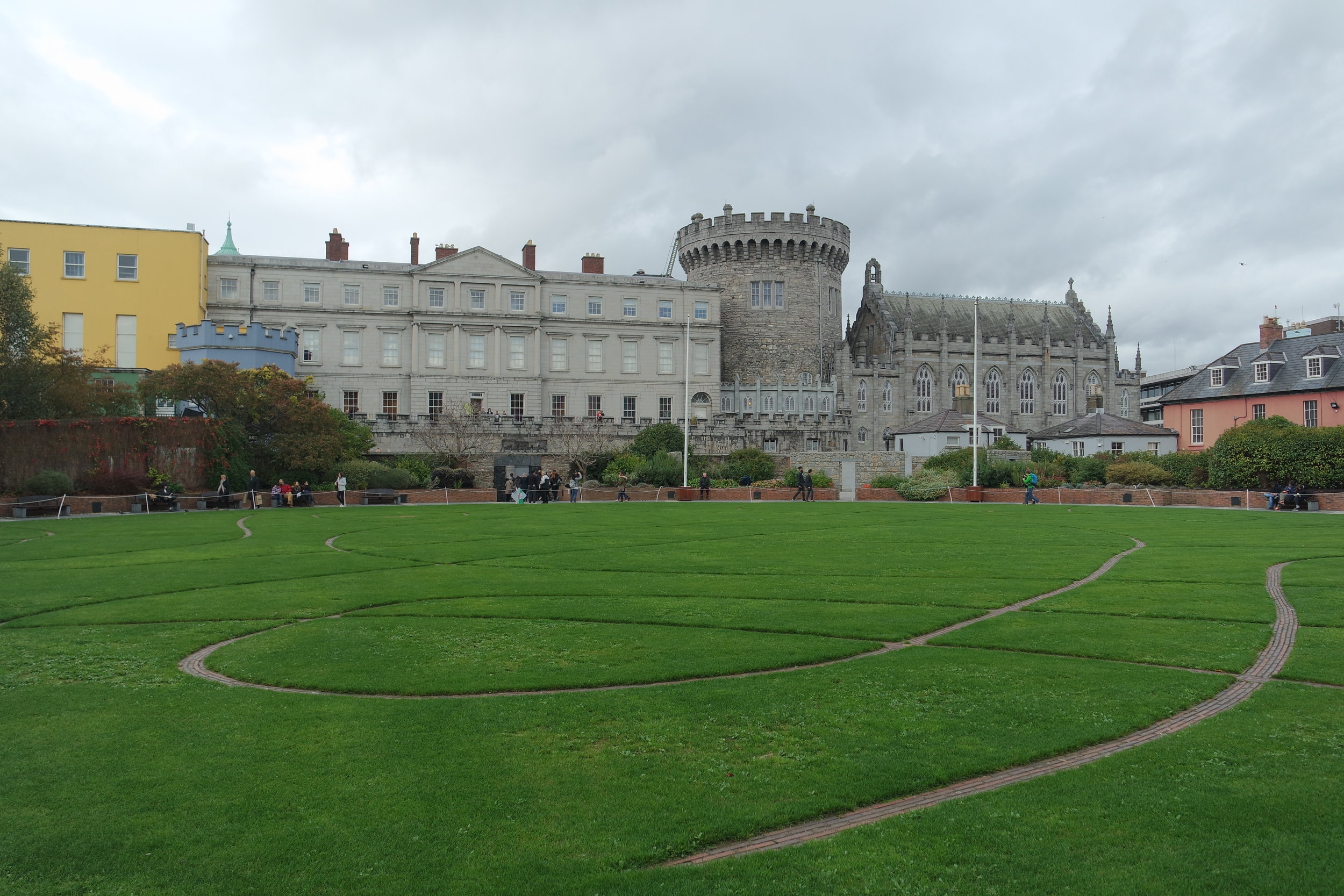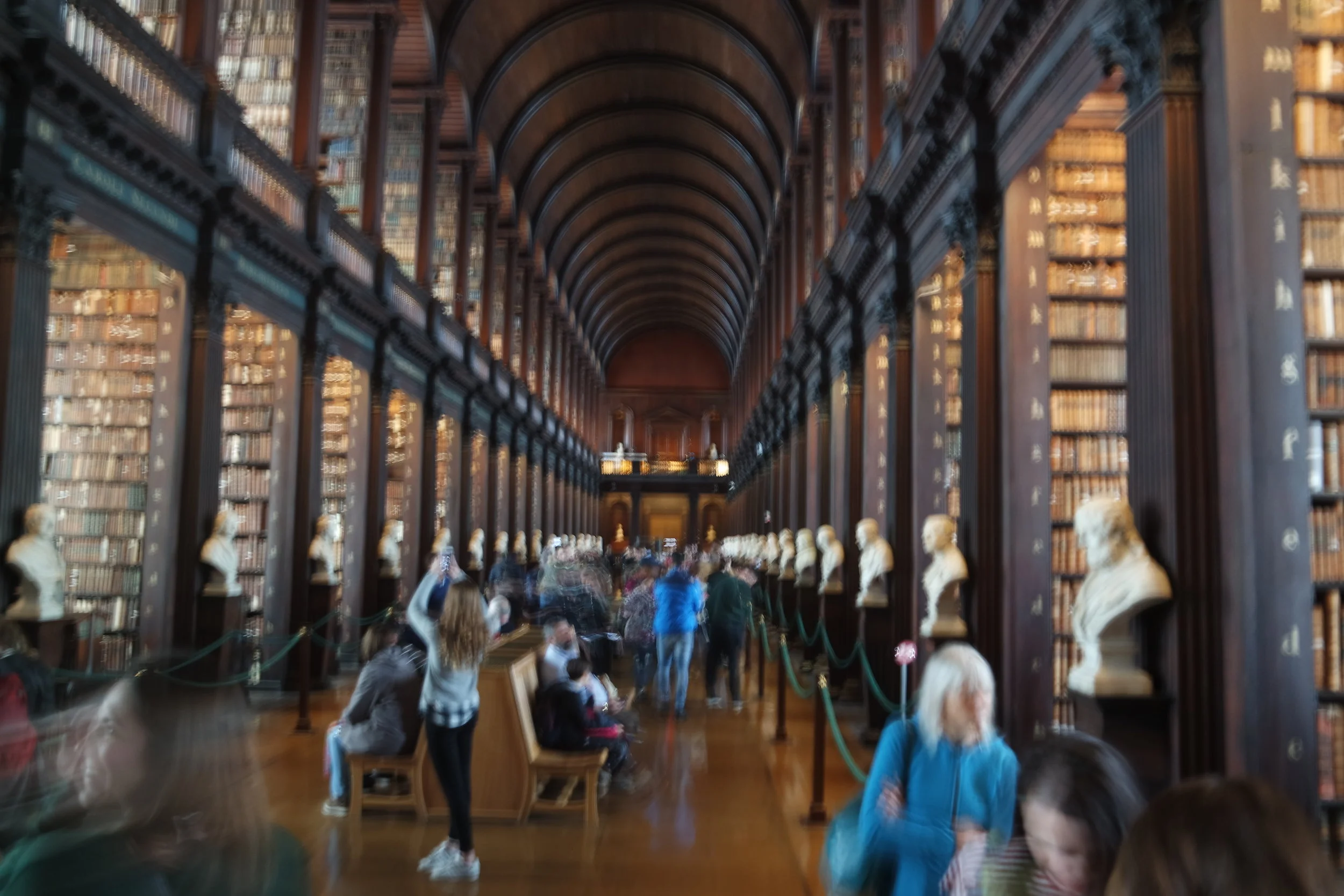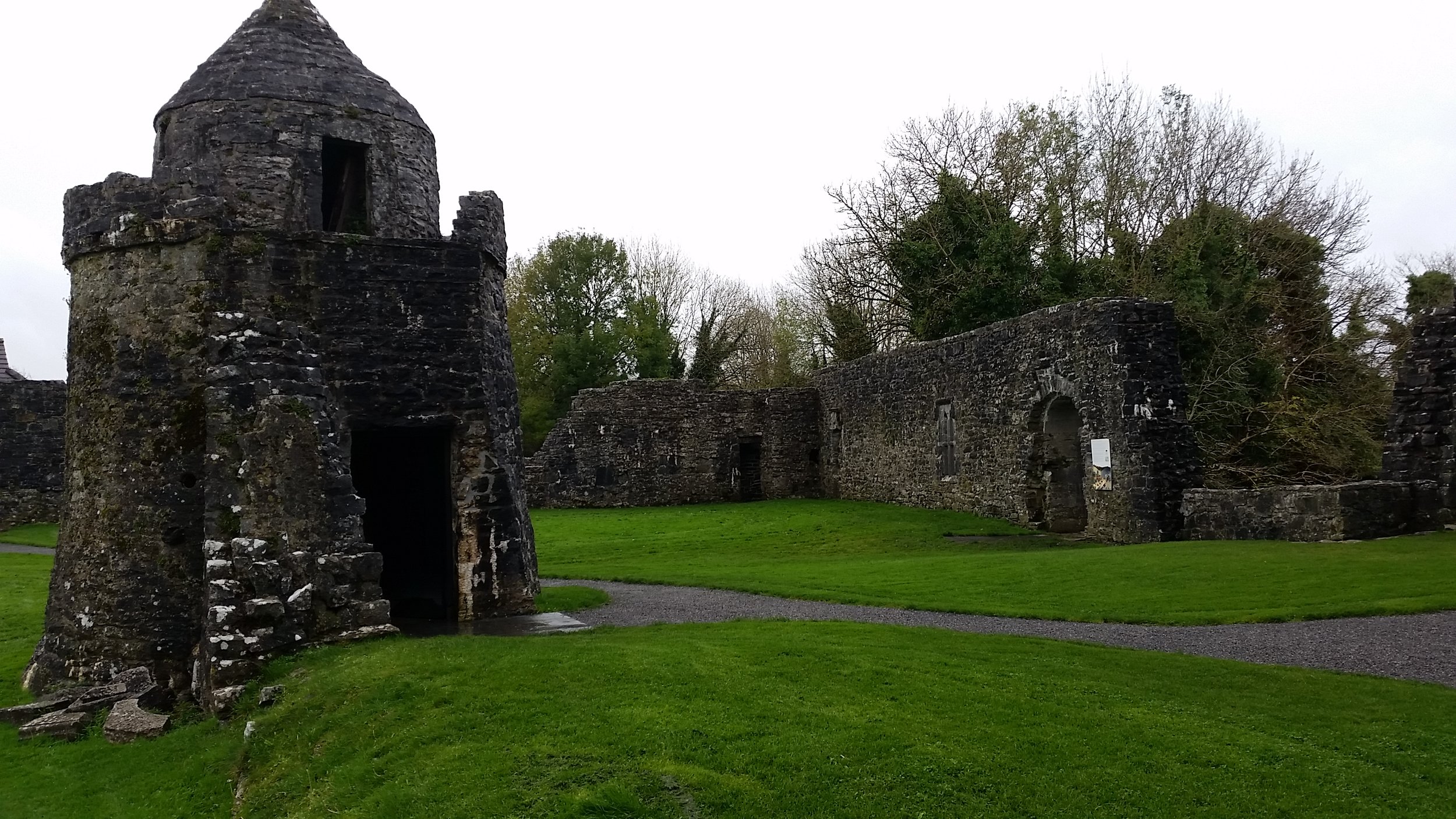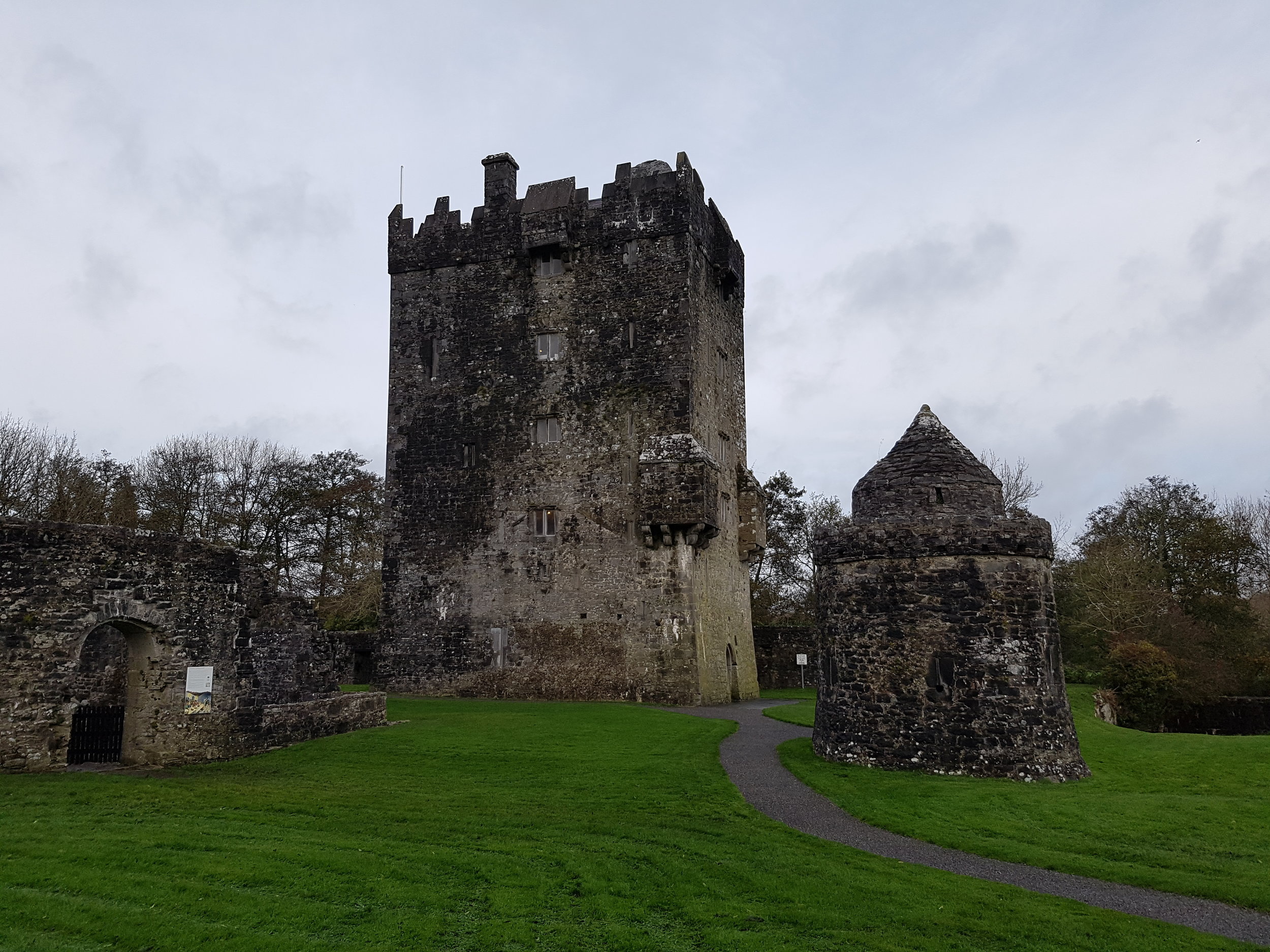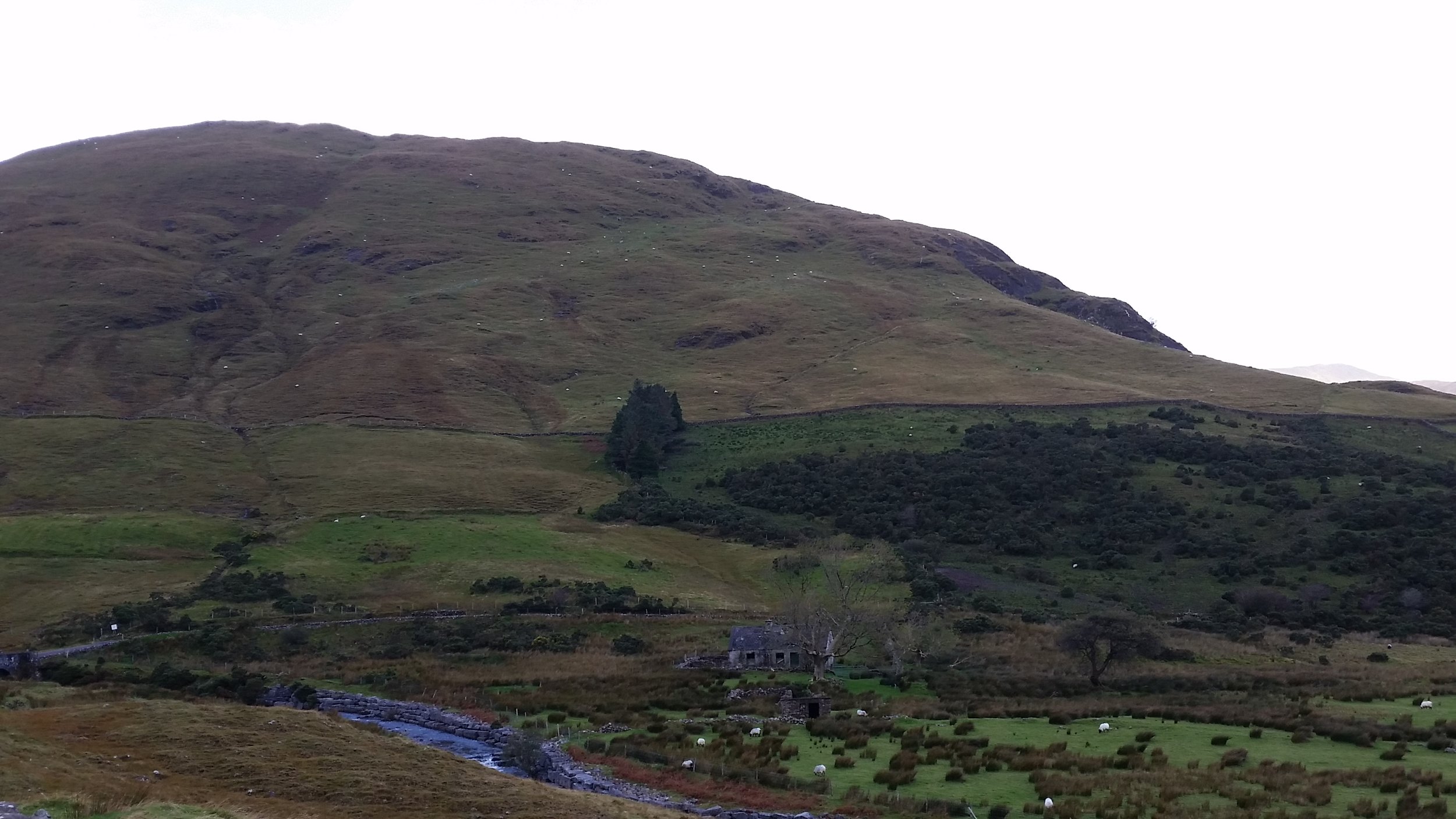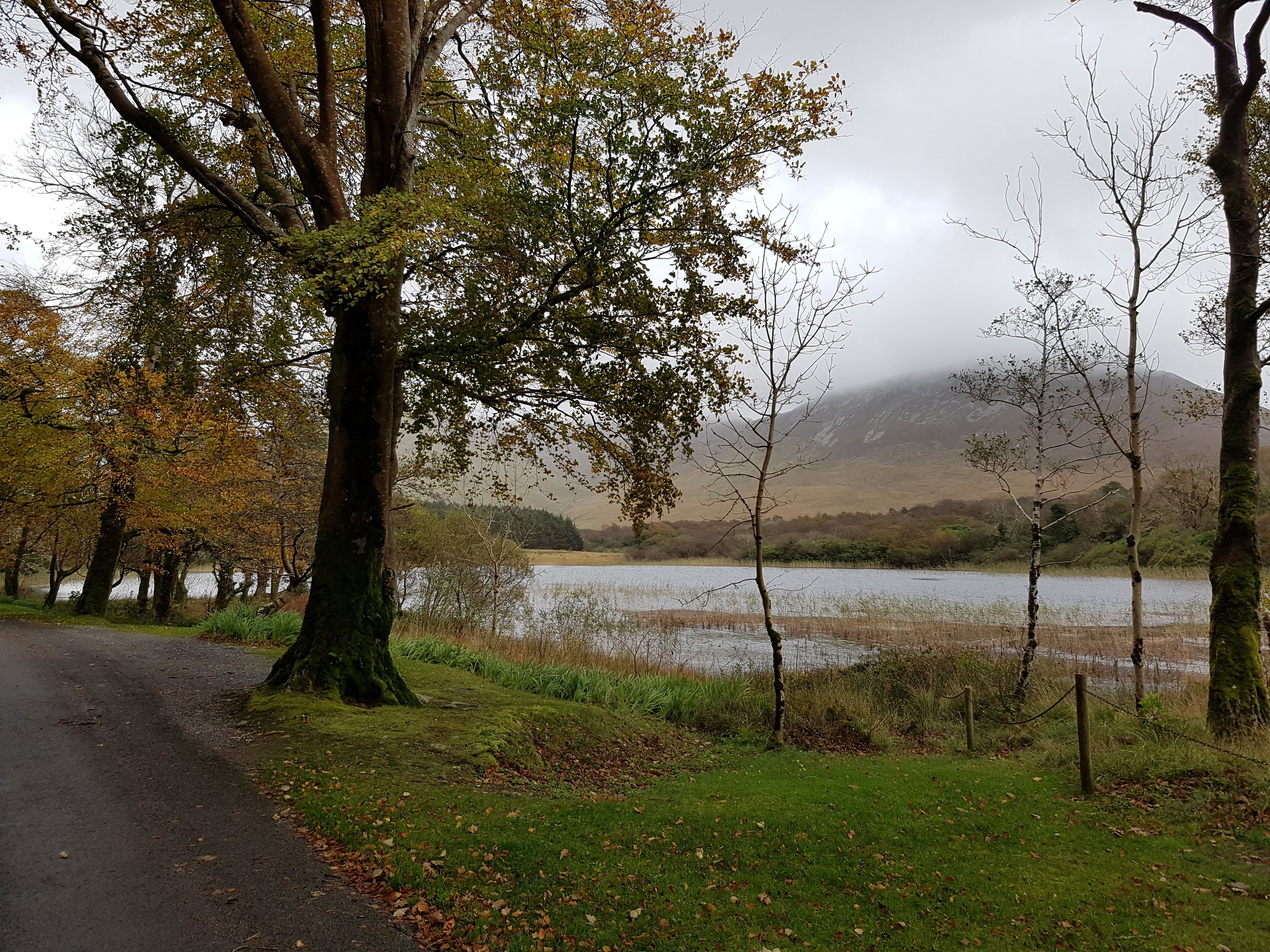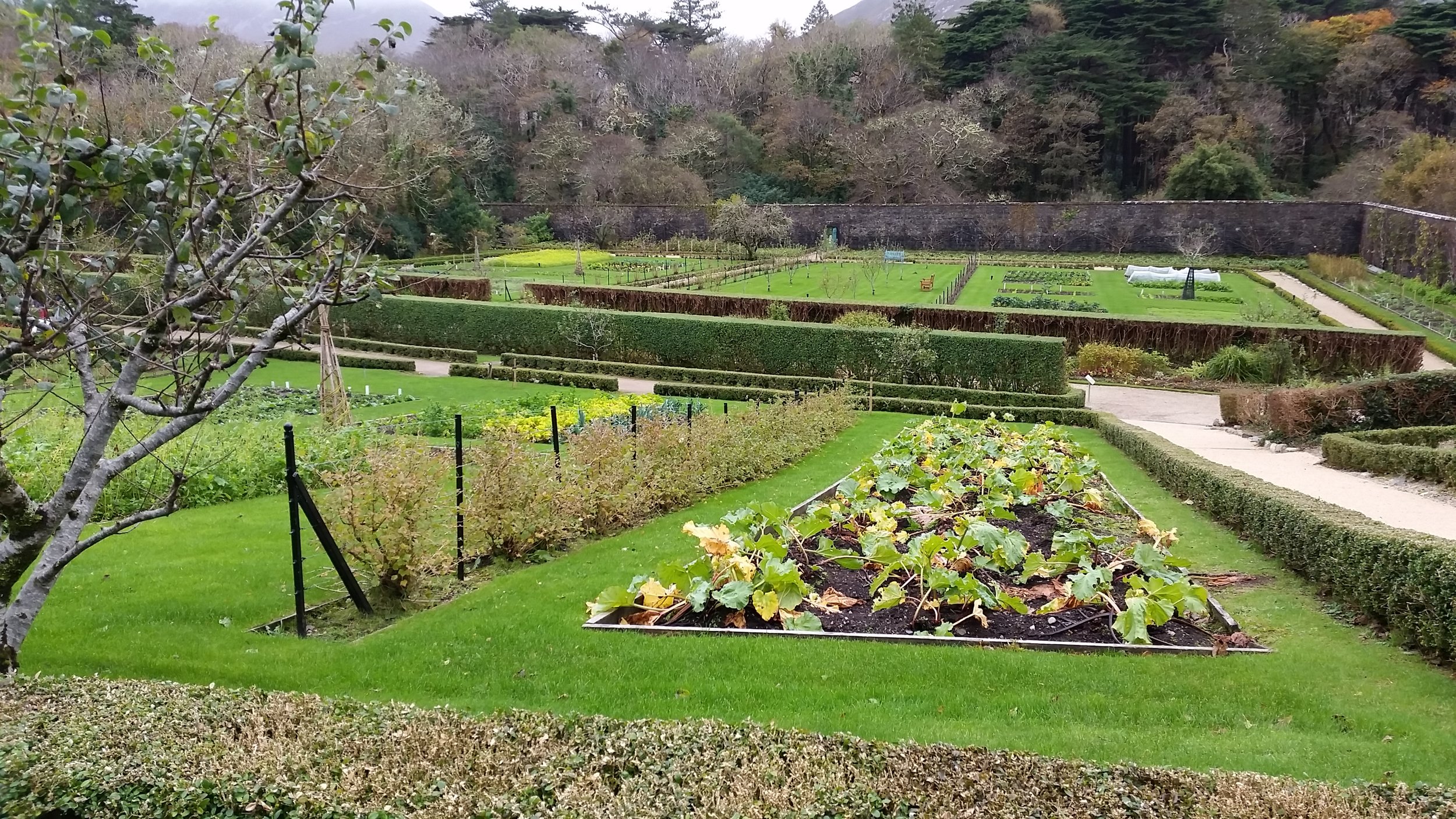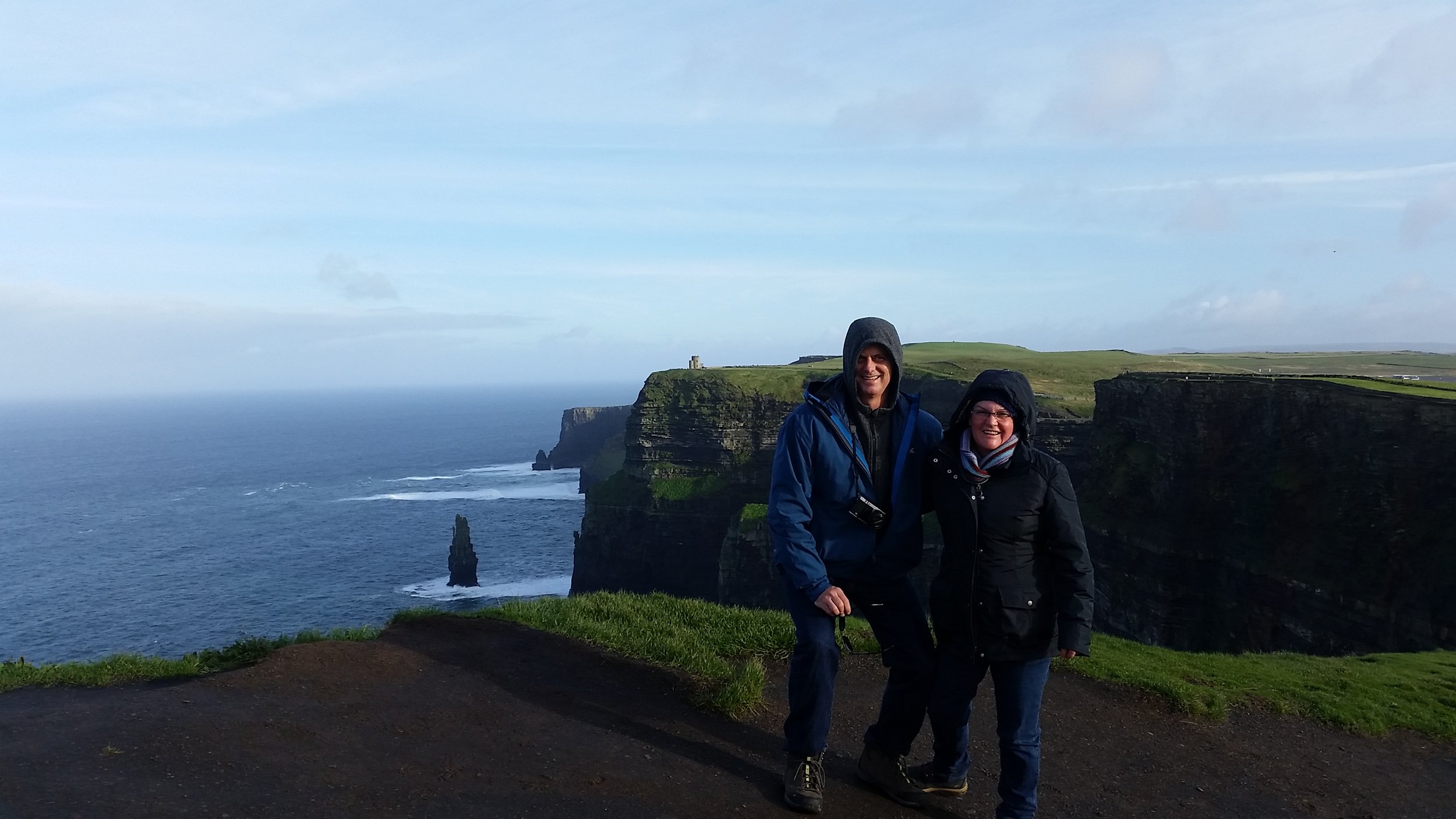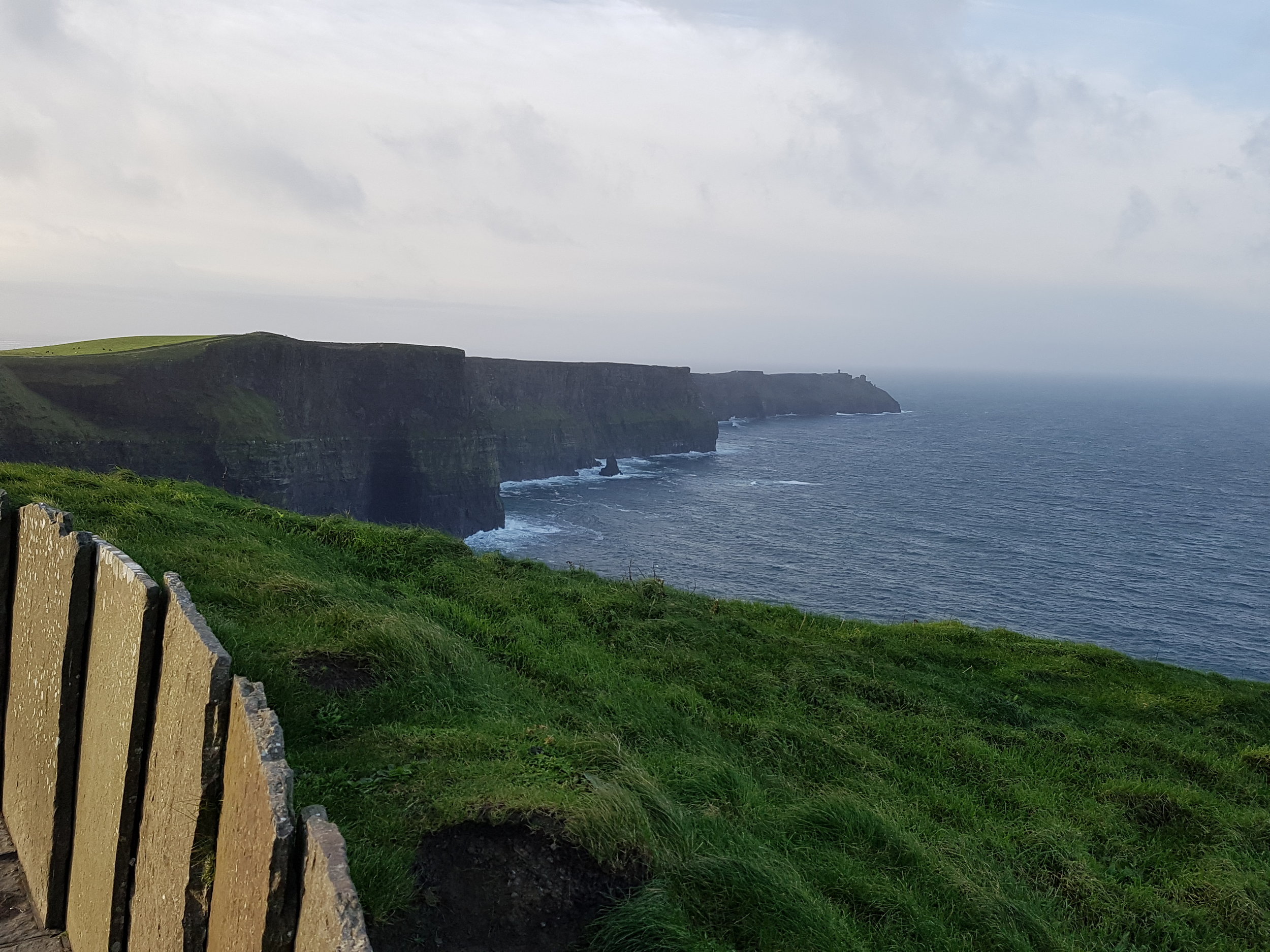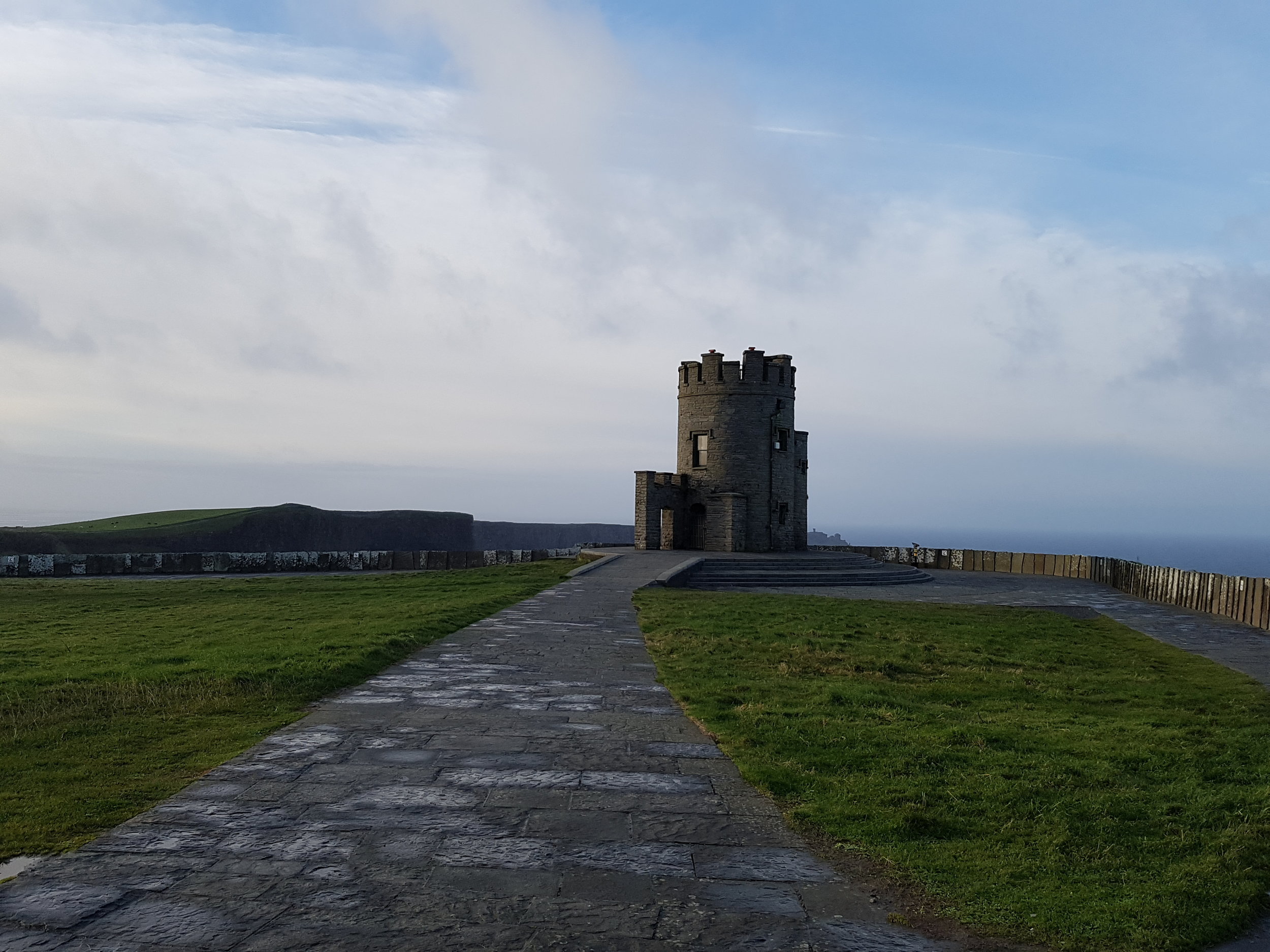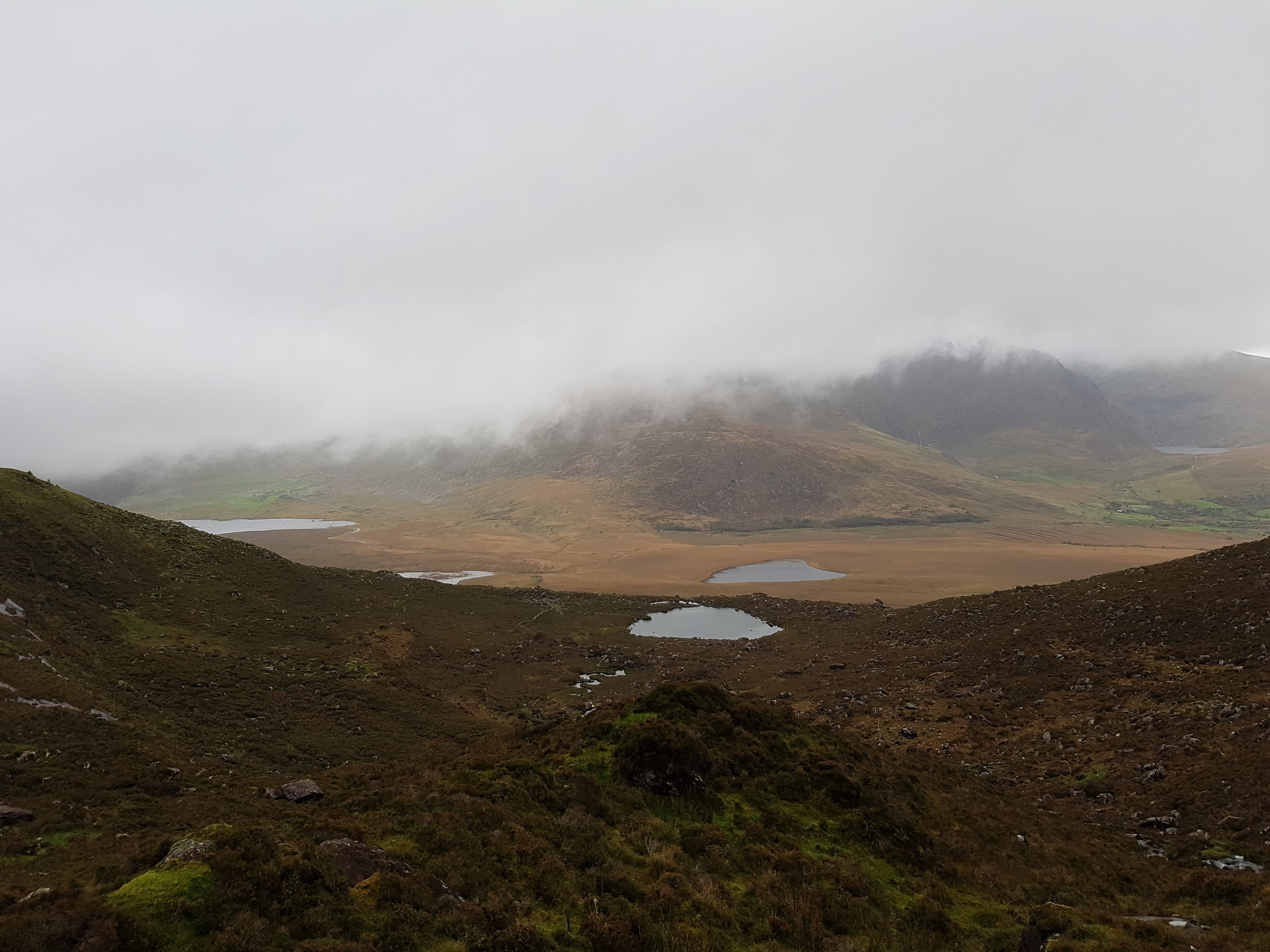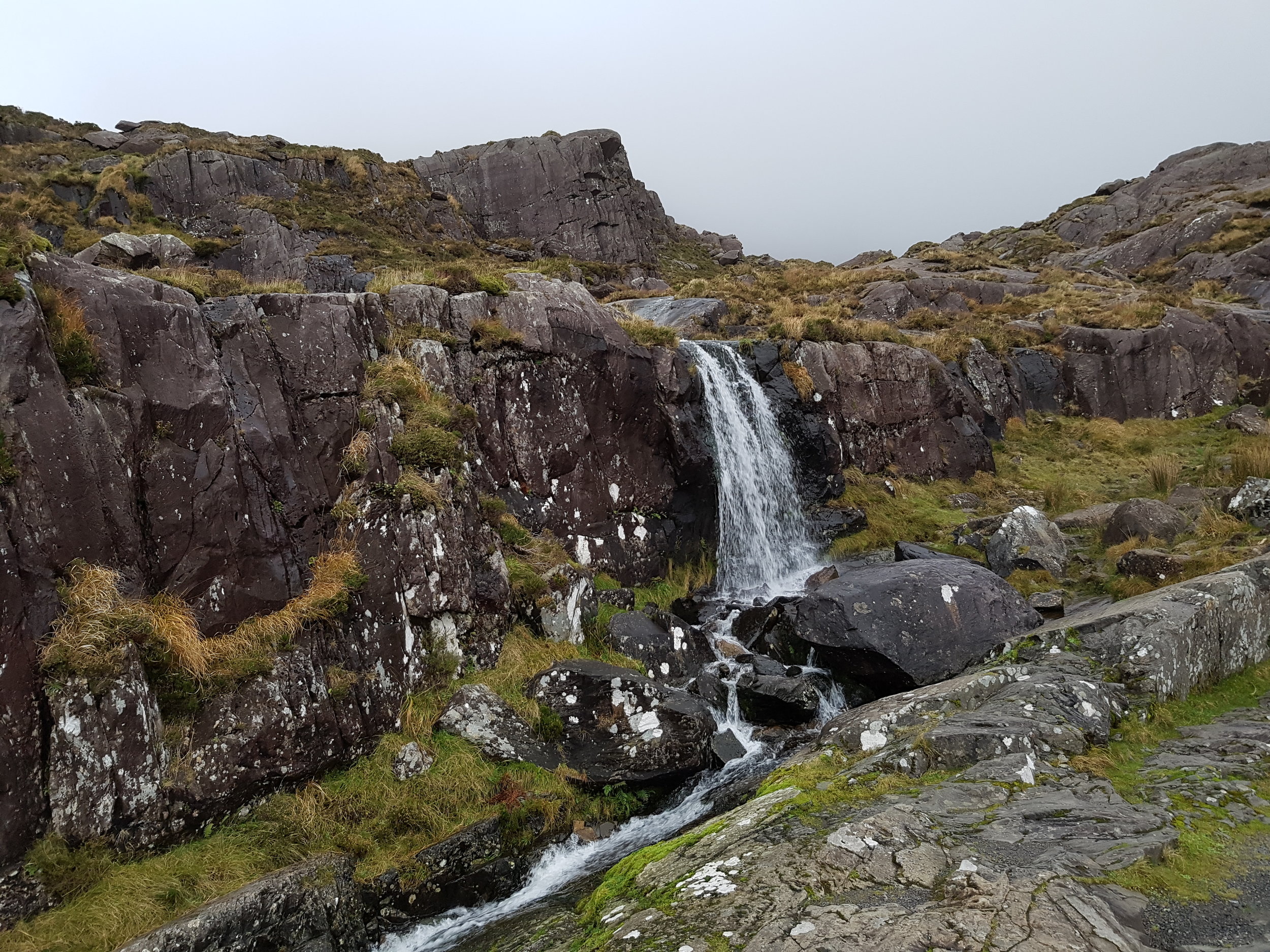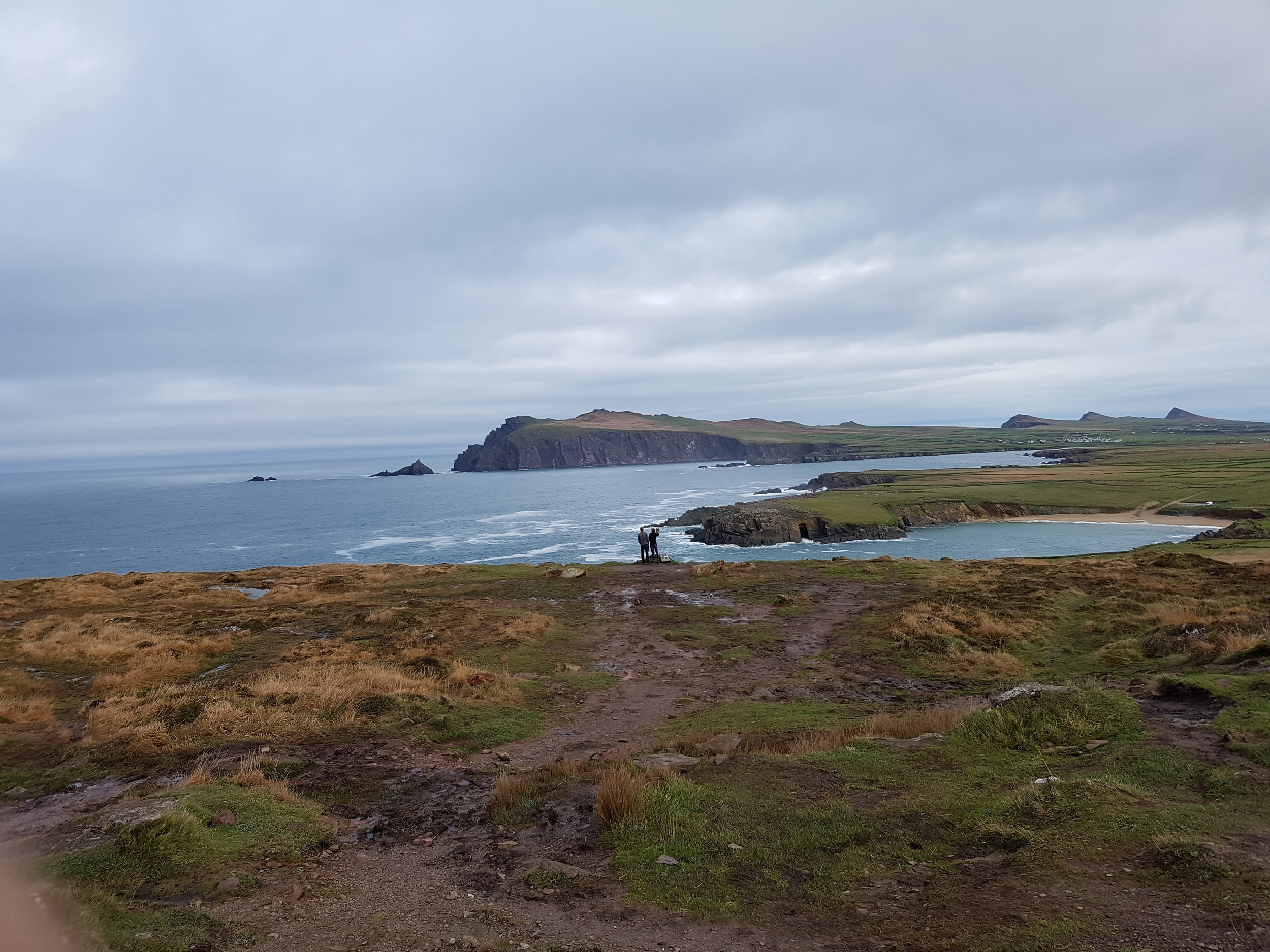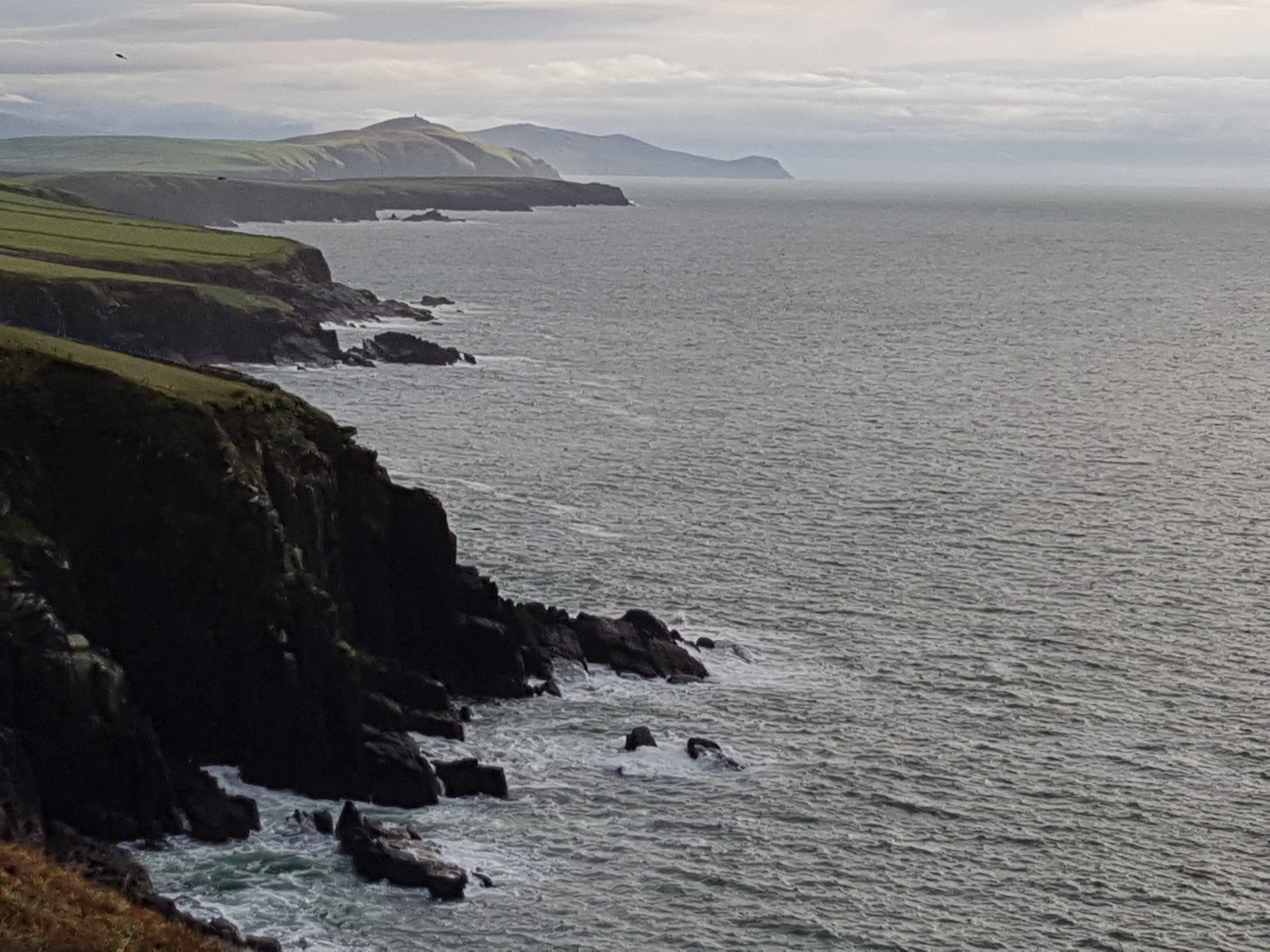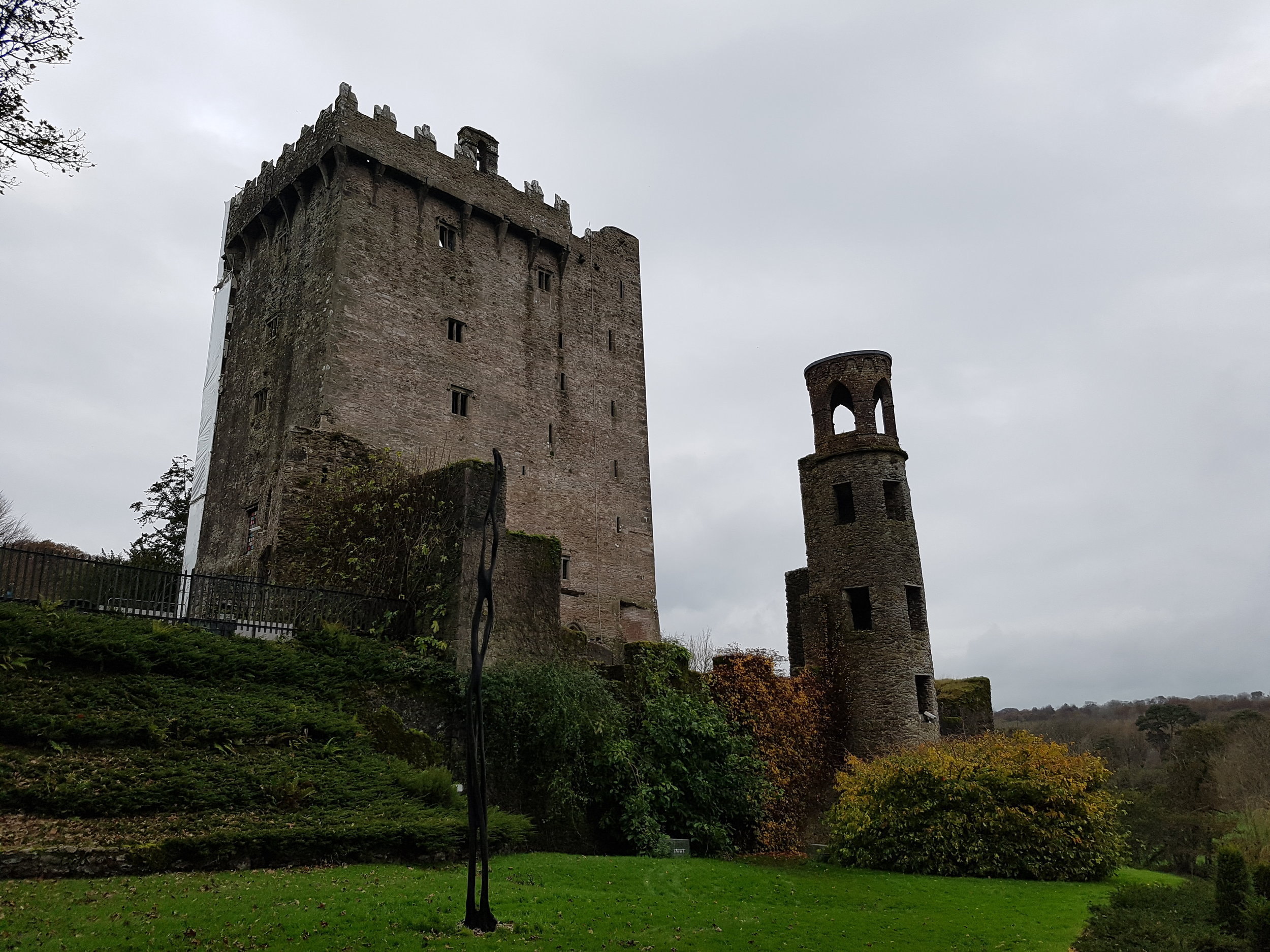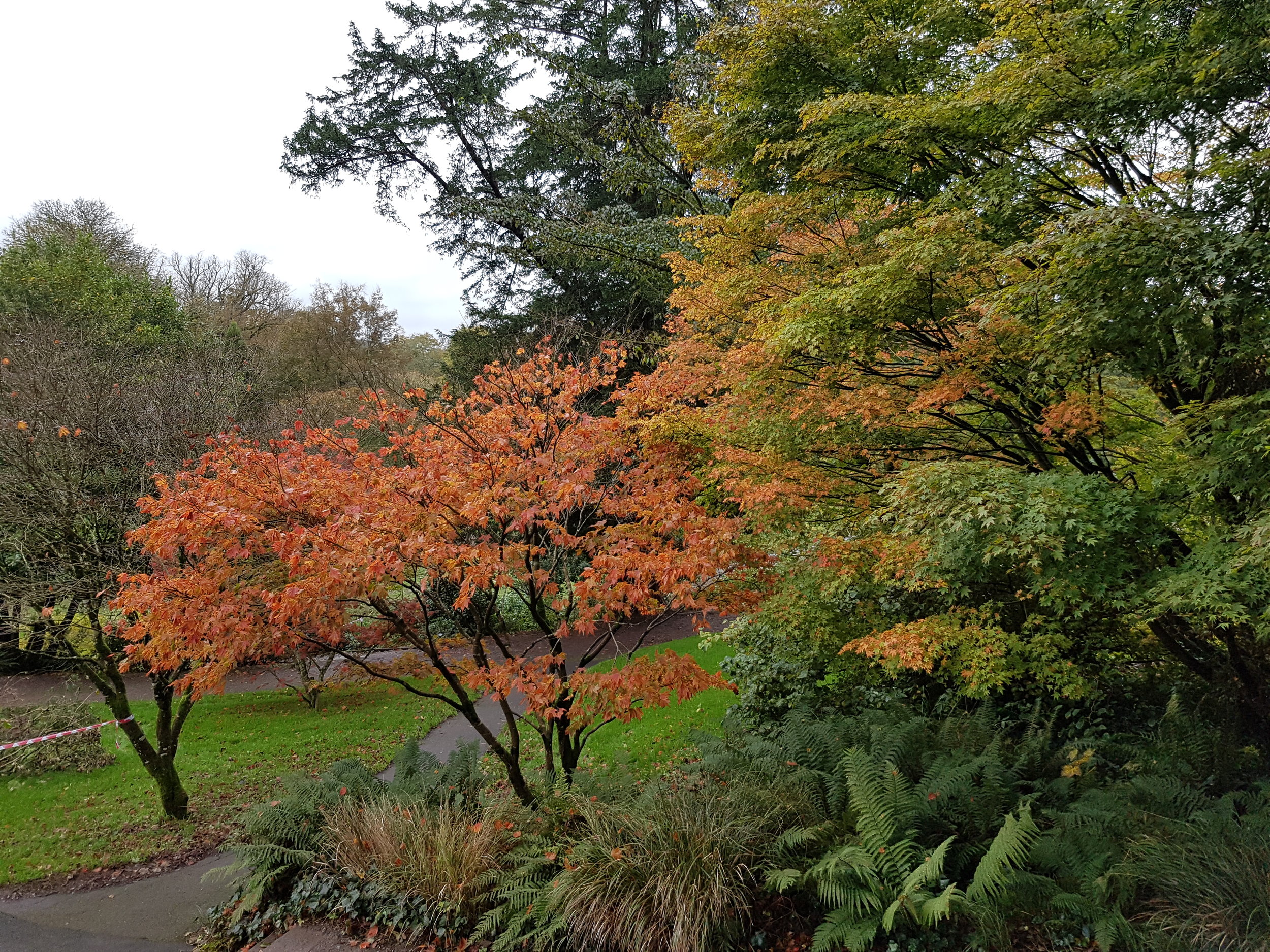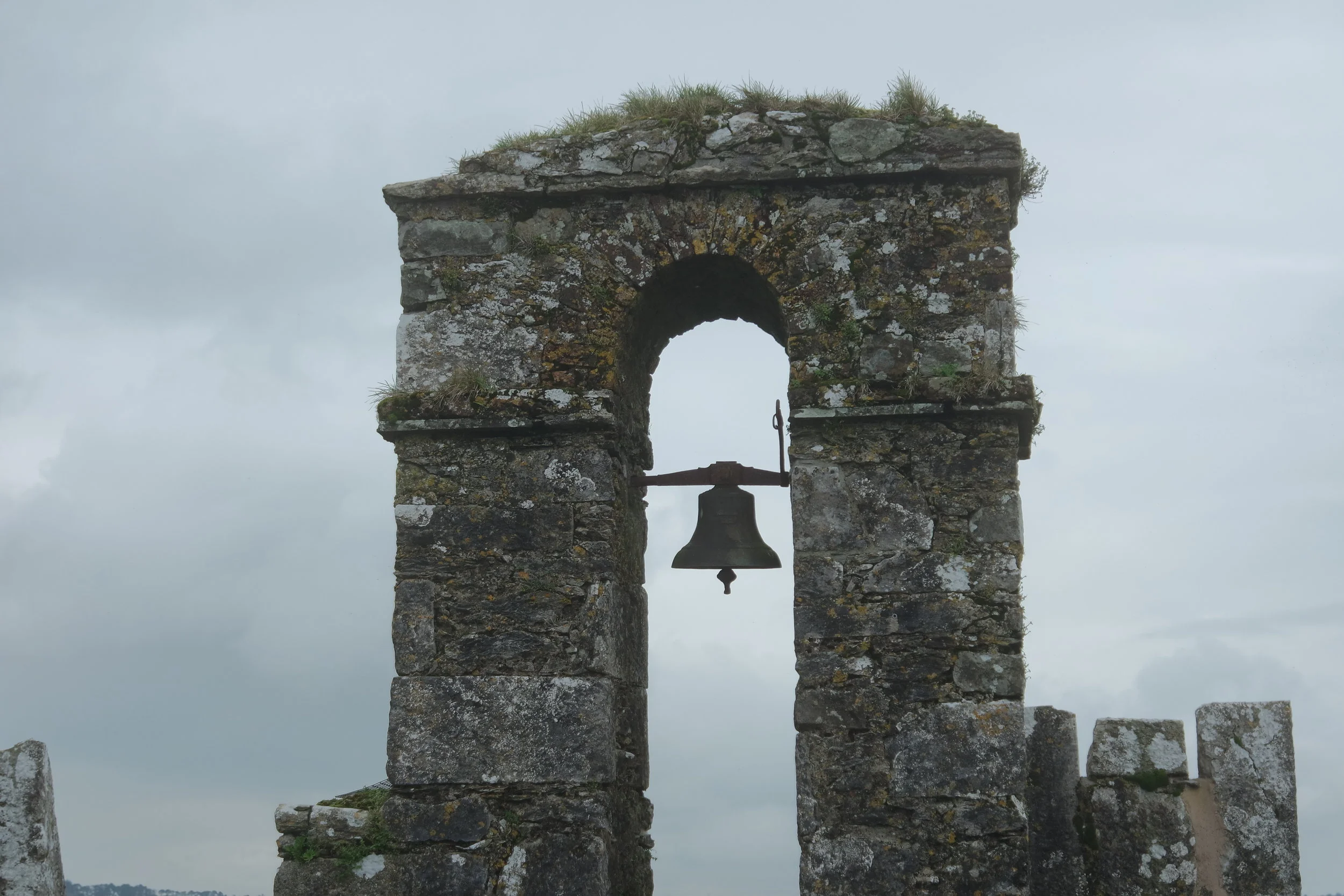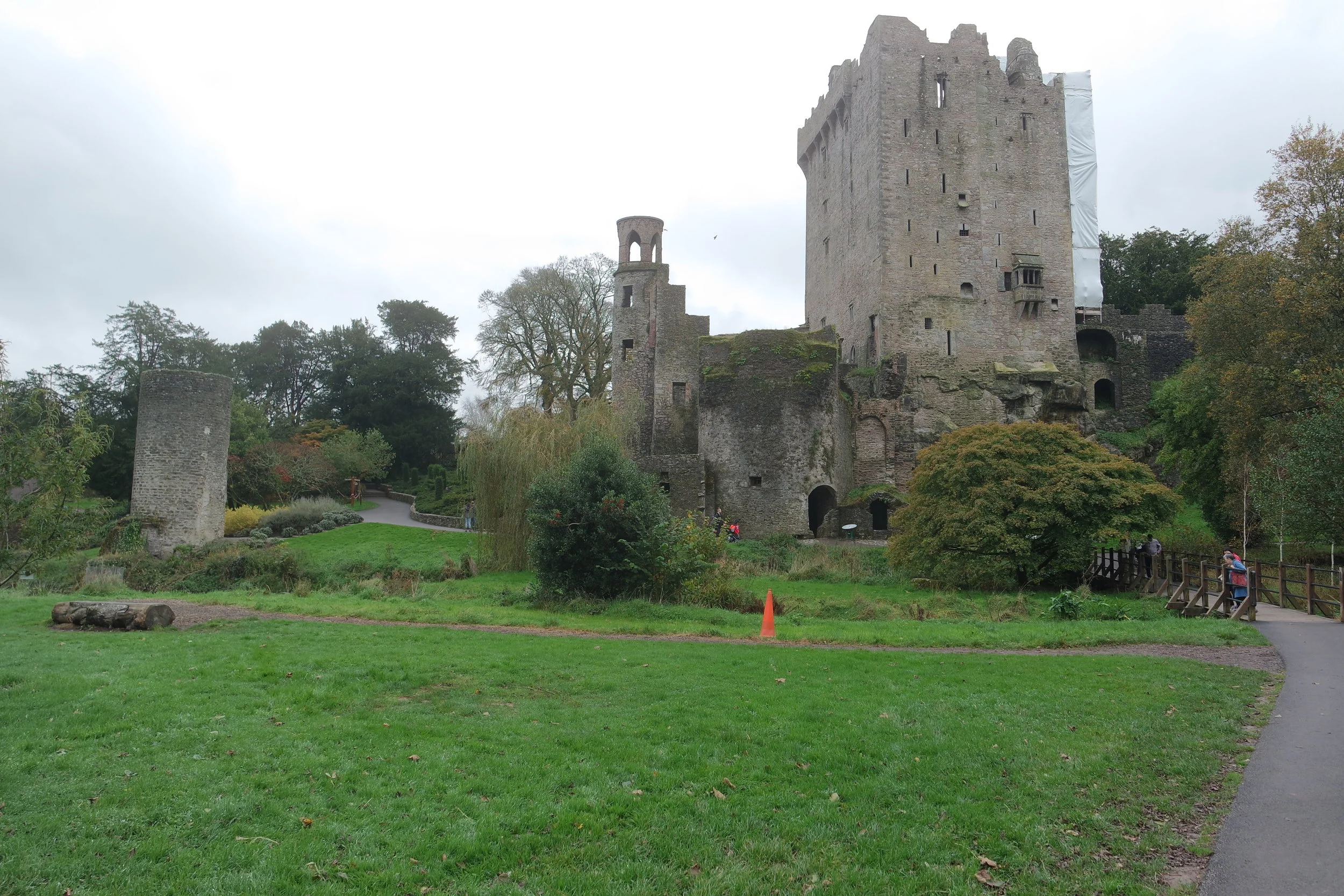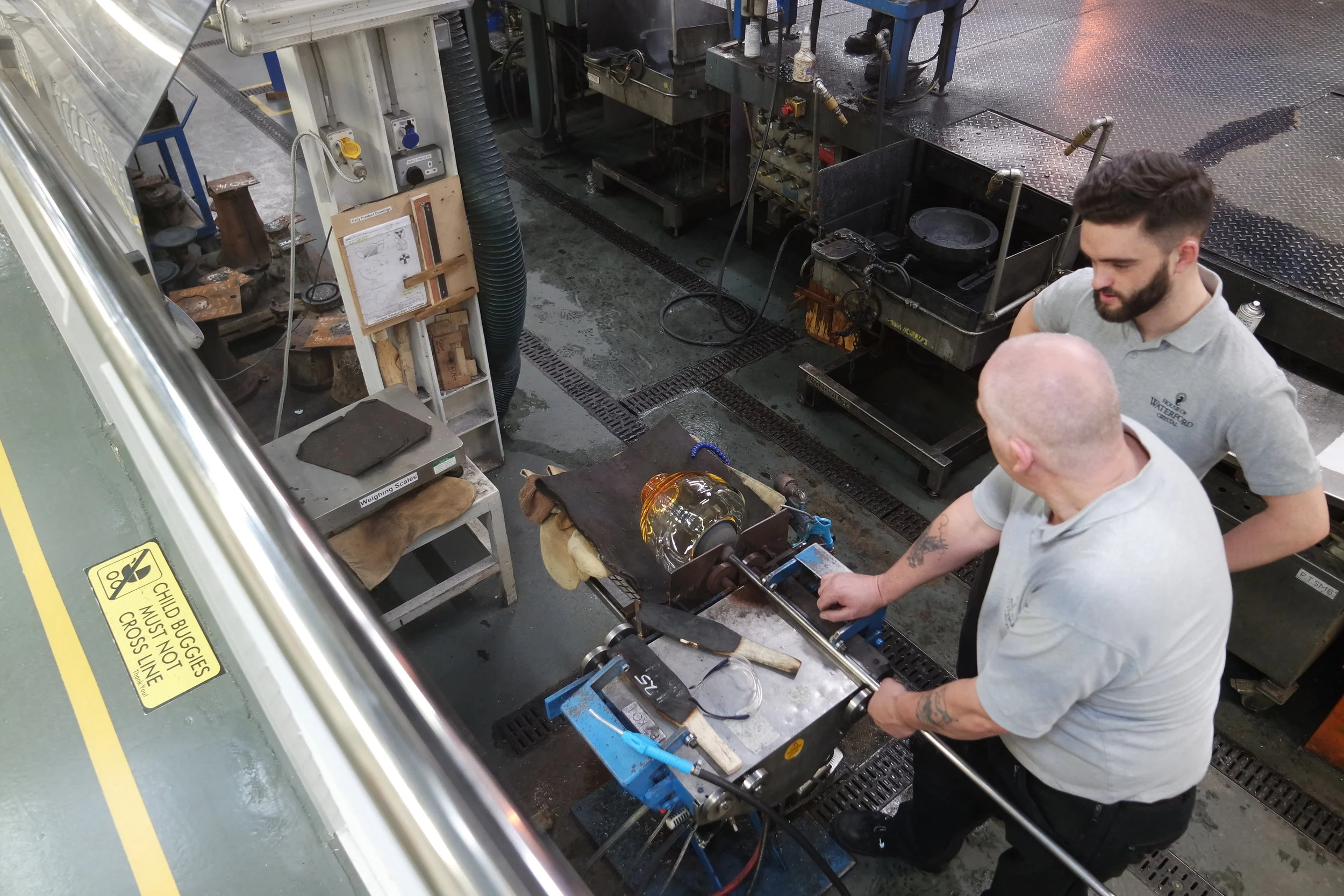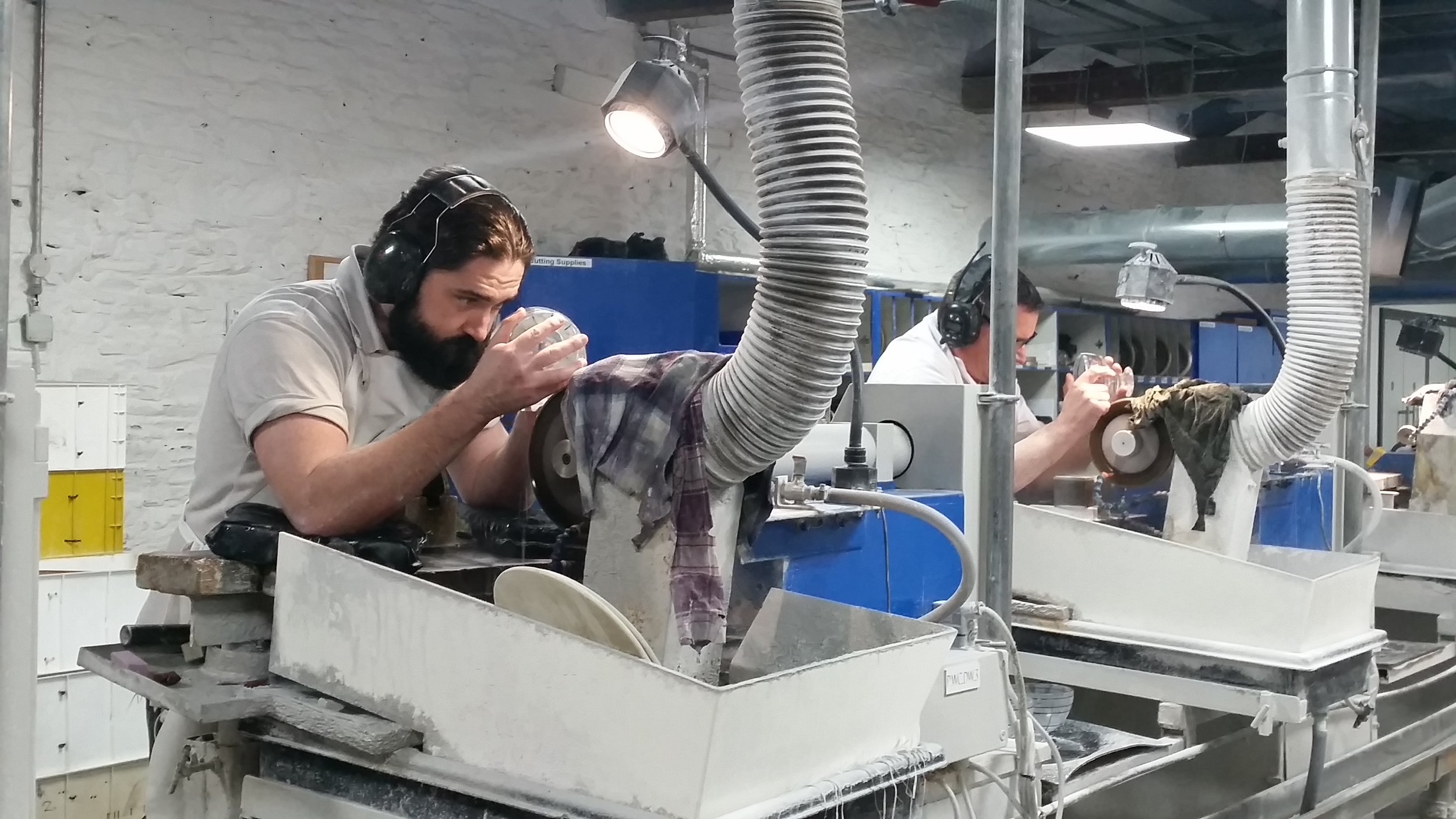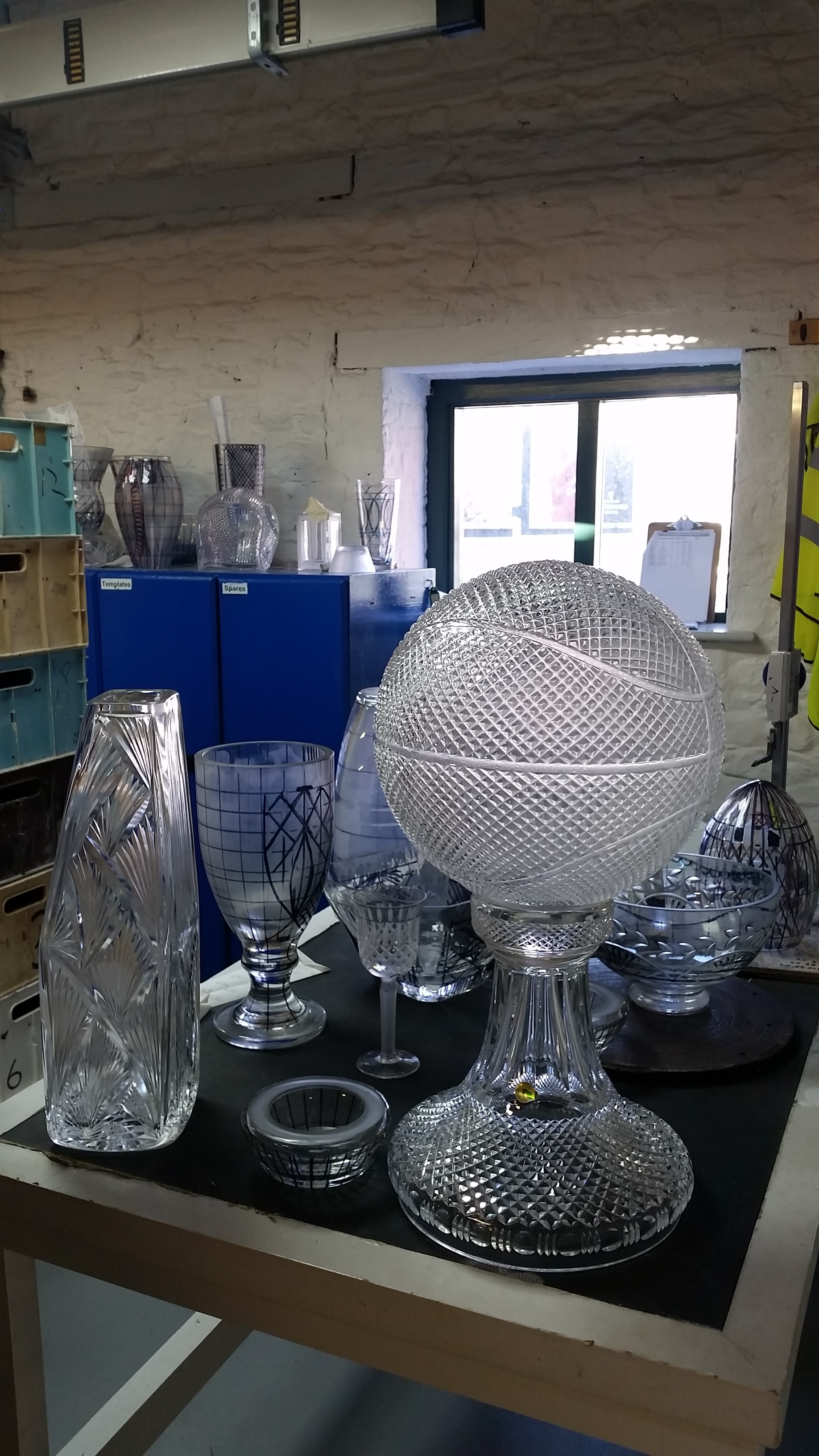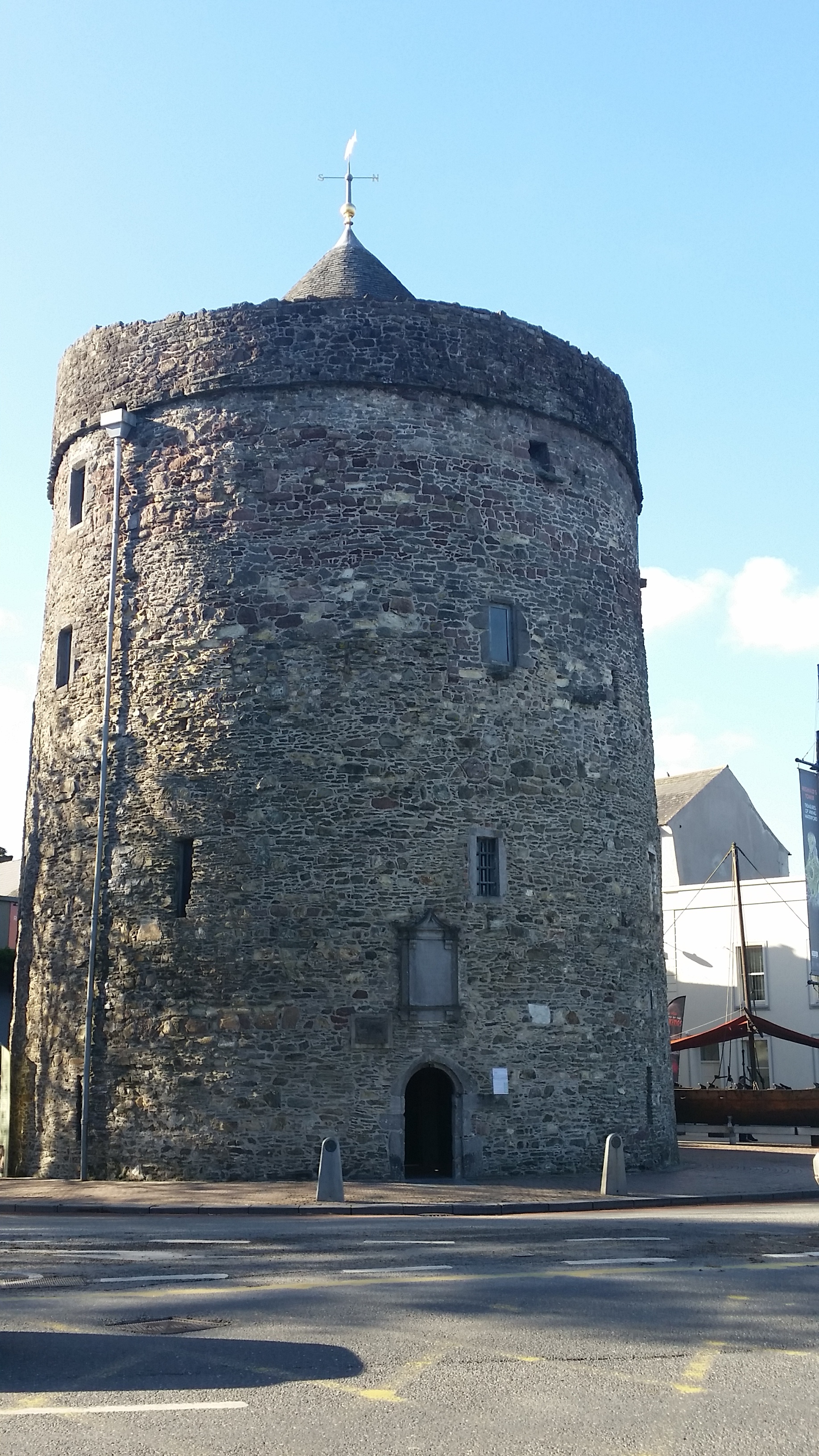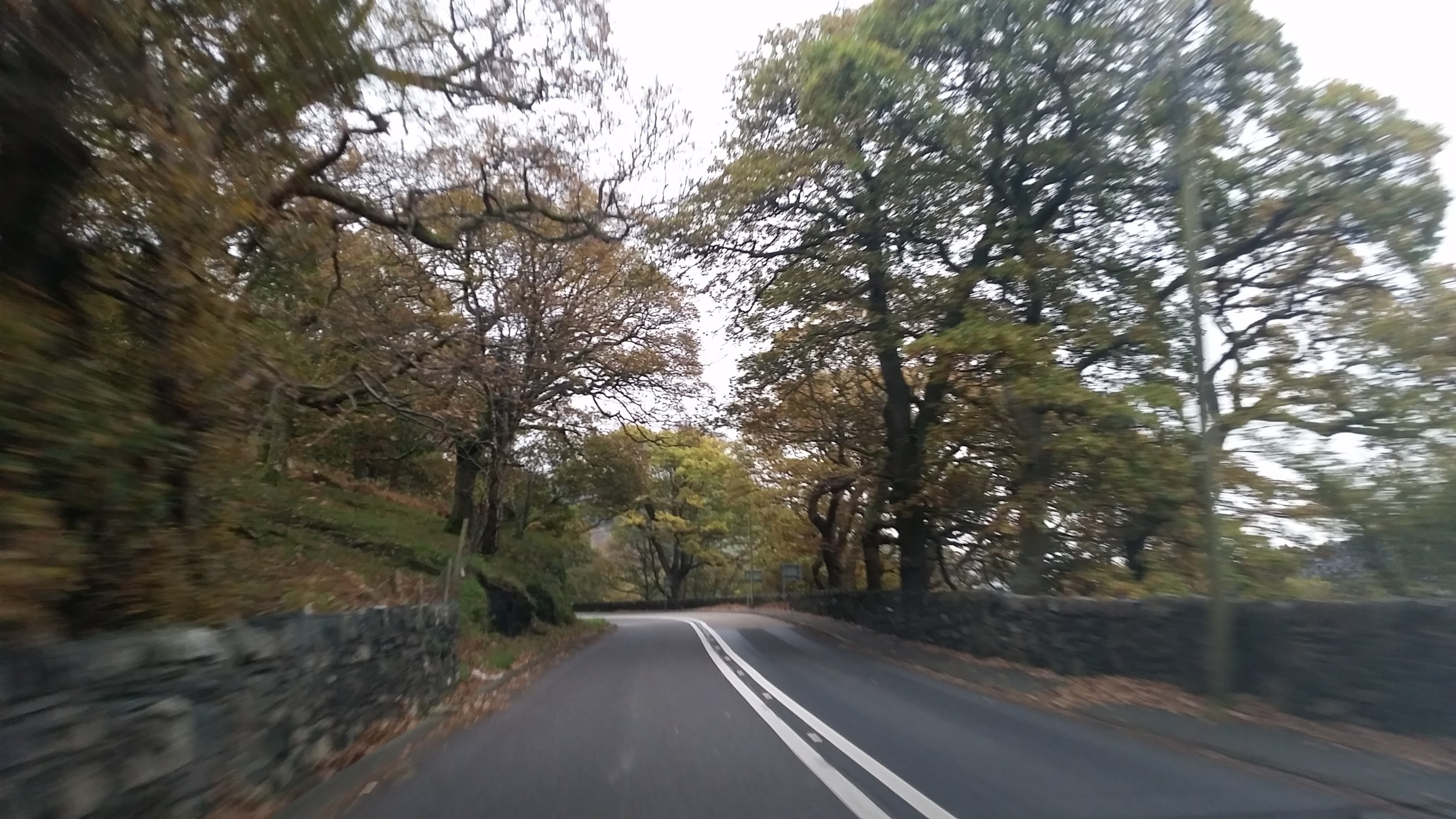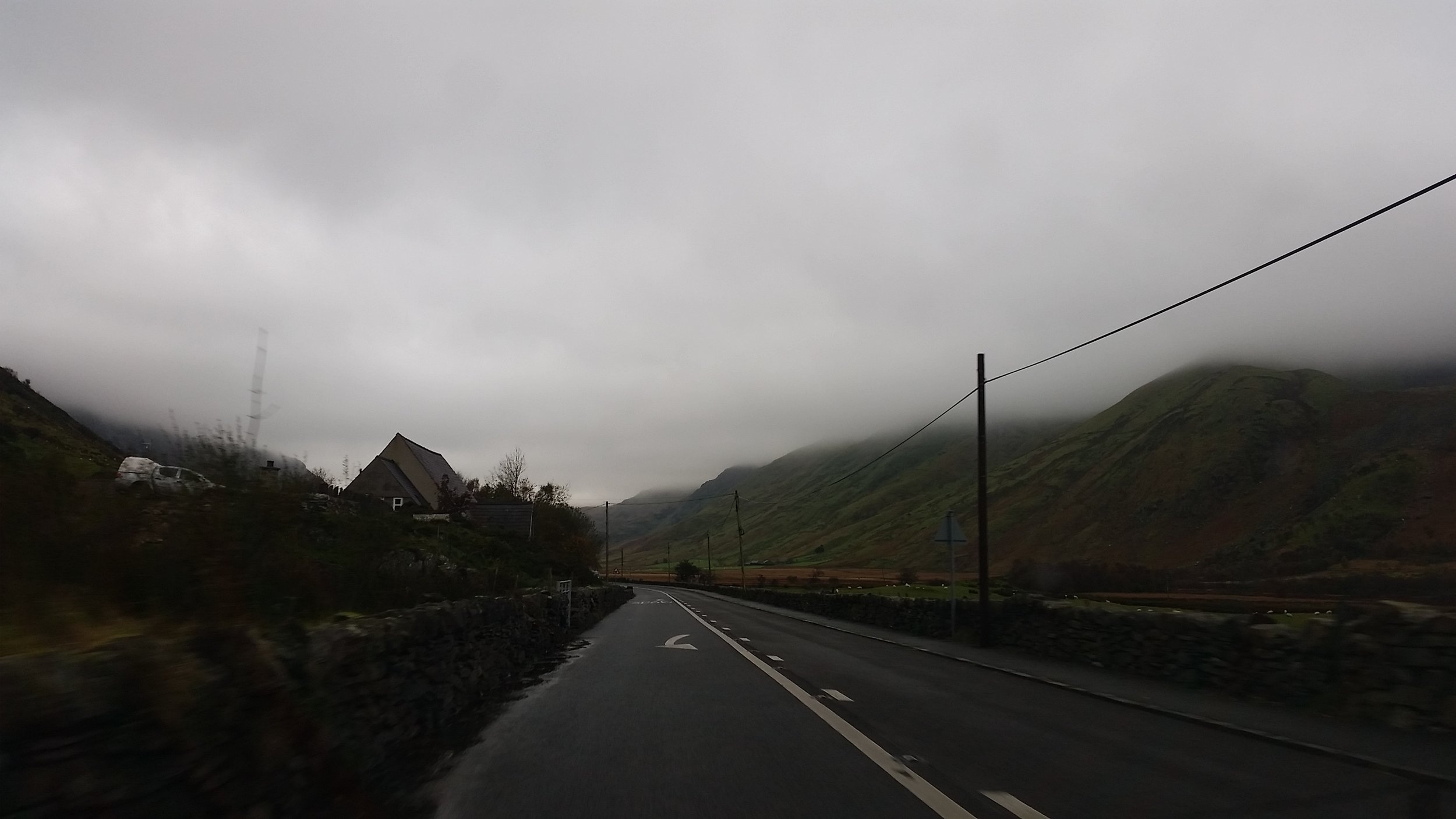Ireland , October 2017
Saturday, Sunday, Monday morning: For the week of the half-term break, we took our first road trip in Whiskey and headed for Ireland. It was absolutely magical; so beautiful, rugged, ancient and fun. We drove to Holyhead in Wales, about 5 hours, to catch the ferry to Dublin. We had two nights in Dublin, and spent a day and a half walking around the city, beside the River Liffey, taking a walking tour through the city with great history commentary (Dublin Castle and Irish Parliament below), touring the Guinness Storehouse (Guinness Harp below), Jameson's Whiskey, and the Temple Bar area. We found a bar along the riverfront, and spent the evening listening to live music, drinking (lots of) local whiskey and ales, and generally enjoying the craic. The next morning we headed to Trinity College, had a short tour with some interesting history of the college, and then saw the beautifully written and illuminated Book of Kells, a record of the four Gospels written in about 800 AD. The colouring and calligraphy were fascinating. We then went into the Long Room (below), the library at Trinity, organised by size of book, and still a working library.
Monday, Tuesday, Wednesday: After the history at Trinity, we headed west out of Dublin towards Galway. Two hours of driving, and we had basically crossed the country, albeit at the narrowest part of the island. Galway was so lovely; the River Corrib rushes through the centre to Galway Bay, with old stone homes along the canals. The winding streets through the shopping area were full of buskers, shops selling knitwear, and plenty of pubs. We had two nights in Galway, so spent a day driving out west through parts of the Connemara Peninsula. First stop was Aughnanure Castle (below), ruins of a castle built by the "Fighting O'Flahertys" in about 1500. The sense of defence and isolation was so strong, in this small tower castle near Lough Corrib. It would have been a very harsh life, defending people and stock from other clans, and ultimately, the English. The country around is still farmed and grazed; you would need really good dogs to muster those sheep, the little white specks on the tops of the hills!
After the ruins, we called at Kylemore Abbey, with a Victorian Walled Garden (bottom row). The beautiful abbey was built by an Englishman as a castle for his wife, and was then an abbey and school. The school closed less than 10 years ago, but the Benedictine Nuns are still in this enormous building. The walled garden was under winter working and planting, but must have been astounding in it's prime, with 21 glasshouses as well as extensive garden beds across the 6 acres. It's gradually being restored, and looks so lovely, even in early winter.
From Galway we drove south, and stopped at the Cliffs of Moher. From the cliff tops, about 200m above the wild and windy North Atlantic Ocean, you can see the Irish Arann Islands. It wasn't too windy, although the cliffs are so steep, it wouldn't take much to be blown off. Puffins nest on the island in front of the cliffs, but unfortunately it wasn't the right season, and they'd all migrated elsewhere. This is County Clare, one of Ireland's famous counties, and farmers own and work the land right up to the public access for the Cliffs. At the peak of the Cliffs is a tower, Castle O'Brien, built by an Englishman in 1835 so tourists could view the Cliffs in comfort. Unfortunately, the Tea Room was closed for the season. Beautiful, spectacular, and rugged. From Moher, we drove towards Limerick, pulling up for lunch in a little town with the most amazing abbey.
Wednesday, Thursday: We drove across the peninsula via Conor Pass, to arrive at Dingle for the night. Dingle is famous for the dolphin which appears in the bay, but we didn't look for him. It was so lovely to walk around the streets of this small town, which probably survives on a mix of fishing and tourism these days. We had dinner at the pub, but sometime during the day I ate something that didn't agree with me, and woke up during the night feeling awful. On Thursday, Michael found some of the best coffee for the whole trip (typical!), then went for a drive out along the Dingle Peninsula while I slept in our Airbnb. We headed off to Cork, through more beautiful country, and once we arrived in Cork, headed for Blarney Castle. Michael looked through the castle and gardens, including the 17th Century "Poisons Garden", with a marijuana plant fully fenced off (great healing powers!). He also kissed the Blarney Stone, so look out! Cork was so lovely; the centre of town, beautiful Airbnb, and so much to see, but we were running out of time. A return trip will be needed.
Friday: On the way from Cork to Dublin, we stopped at Waterford. We called at the Waterford Crystal Factory, and scored a tour just for the two of us! There are some advantages to travelling out of season. The factory was fascinating; apprentices have to serve about four years, learning glass blowing, cutting, engraving and polishing, and sculpting. At the end of their apprenticeship, they make their "Apprenticeship Bowl", displaying the skills they have learnt. We walked through the factory where there are about 70 craftsmen and women working, a smaller branch of the main factory in another part of Waterford. We were so close to these skilled workers; it was amazing to see how they blew the glass, or cut the designs into pieces. and then to see the finished artworks. We now appreciate the cost of those beautiful pieces of glassware. It was also interesting to see the trophies, or copies, for many major sporting events around the world, still made at Waterford Crystal, especially golf trophies. This was an unexpected highlight of the trip.
Waterford also has a long and varied history, from Vikings to various kings of England. Everywhere you go in England, Ireland, and further, the fingerprints of Henry VIII can be seen. The Viking Museum was so interesting, with some amazing artefacts beautifully preserved and presented. Reginald Tower, in the centre of the town beside the River Suir, was built in the early 15th Century, and was an important part of the Viking settlement, then Irish, English and Irish settlements. There is so much history, everywhere, wherever you go. I feel the need to read, read, read.
From Waterford, we drove to Dublin to stay the night before heading back to England.
Saturday: We stayed near the port in Dublin, caught a morning ferry back to Holyhead, and drove through Snowdonia National Park in Wales on our way home. This countryside was beautiful; mountains, leaves turning to autumn colours, with clear rivers and streams running through it all. We stopped in the town of Llangollen for lunch, and had two of the biggest, most delicious roast pork rolls ever! Llangollen was full of very fit, enthusiastic people with hiking gear, canoes, rucksacks, and all manner of outdoor equipment. And according to the Welsh teacher Michael works with, the pronunciation is nothing like Llangollen ; it involves a lot of guttural sounds which we still have to master.
Ireland was fabulous. We will be returning to revisit the south, and to go to the northern areas of the country. We loved Ireland:
- the rugged landscape, especially along the coastlines
- the beautiful green countryside
- the colours of the local Gaelic football teams being displayed. As we drove through the counties, the flags changed. it was lovely.
- the pubs (given), and music
- Guinness; yes it tastes different (better) in Ireland
- the accents, the signs in Gaelic, the craic, the friendly people (always very welcoming to tourists...)
- the history; so many of our colleagues said they hadn't been to Ireland. But... I can see why. There's a fair bit of history with England, not always good. We made sure our Australian accents were pronounced.
- Connemara; comparatively isolated and so beautiful. Aughnanure and Kylemore were magnificent, each in their own way.
